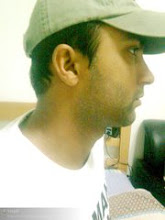The society and culture of Pakistan
(Urdu:cultures and ethnic groups from the Punjabis and Sindhis in the east to the tribal cultures of the Baloch and Pashtun in the west and the ancient Dardic in the north. These Pakistani cultures have been greatly influenced by many of the surrounding countries’ cultures, such as those of Turkish, Persian, Afghan, and Indians of South Asia, Central Asia and the Middle East.
In ancient times, Pakistan was a major cultural hub and the home of ancient civilizations, such as the Indus Valley Civilization – one of the first ’settled’ peoples. Many cultural practices and great monuments have been inherited from the time of the ancient rulers of the region. One of the greatest cultural influences is that of the Persian Empire. Other key influences include the Afghan Empire and later the short lived but influential Mughal Empire.
Pakistan has a rich cultural and ethnic background going back to the Indus Valley Civilization, 2800 BC – 1800 BC. A civilization remarkable for its ordered cities, advanced-planned sanitation, straight roads and uniquely structured society. Present day Pakistan has been invaded many times in the past. it has been occupied and settled by many different peoples each of whom have left their imprint on the current inhabitants of the country. Some of the largest groups were the ‘Aryans’, Greeks, Scythians, Persians, White Huns, Arabs, Turks, Mongols and other Eurasian groups right up until the British who left in the late 1940s.
The region has formed a distinct cultural unit within the main cultural complex of South Asia, the Middle East and Central Asia from the earliest times.[1] There are differences in culture among the different ethnic groups in matters such as dress, food, and religion, especially where pre-Islamic customs differ from Islamic practices. Their cultural origins also show influences from far afield; including from: Tibet, Nepal, India and eastern Afghanistan. All groups show varying degrees of significant influence from Persia, Turkestan and Hellenistic Greece. Pakistan was the first region of the South Asia to receive the full impact of Islam and has developed a distinct Islamic identity, historically different from that further west.[1]
Diwan-e-Khas: The hall of special audience with the emperor
Bahauddin Zakariya
Ancient sites in Pakistan include: Zorastrian, Buddhist, Hindu and Pagan temples and shrines, gardens, tombs, palaces, monuments, pleasure grounds and Mughal and Indo-Saracenic buildings. Sculpture is dominated by Greco-Buddhist friezes, and crafts by ceramics, jewellery, silk goods and engraved woodwork and metalwork.
Pakistani society is largely multilingual, multi-ethnic and multicultural. Though cultures within the country differ to some extent, more similarities than differences can be found as most Pakistanis are of mainly ‘Aryan’ heritage and/or have lived side by side along the Indus River for the past several thousand years and coexisted. However, over 60 years of integration, a distinctive “Pakistani” culture has sprung up especially in the urban areas. Education is highly regarded by members of every socio-economic stratum. The traditional family values are highly respected and considered sacred, although urban families increasingly form nuclear families, owing to the socio-economic constraints imposed by the traditional culture of extended family.
The past few decades have seen emergence of a middle class in cities such as Karachi, Lahore, Rawalpindi, Hyderabad, Quetta, Faisalabad, Sukkur, Peshawar, Sialkot, Abbottabad and Multan. The rural areas of Pakistan are regarded as more conservative and are dominated by regional tribal customs dating back hundreds of years.

No comments:
Post a Comment